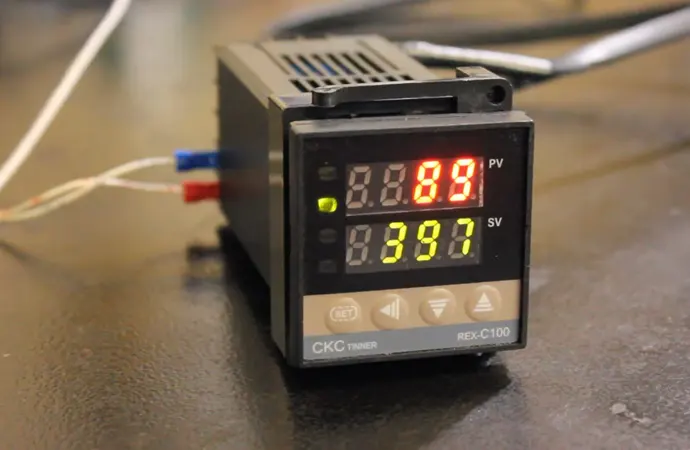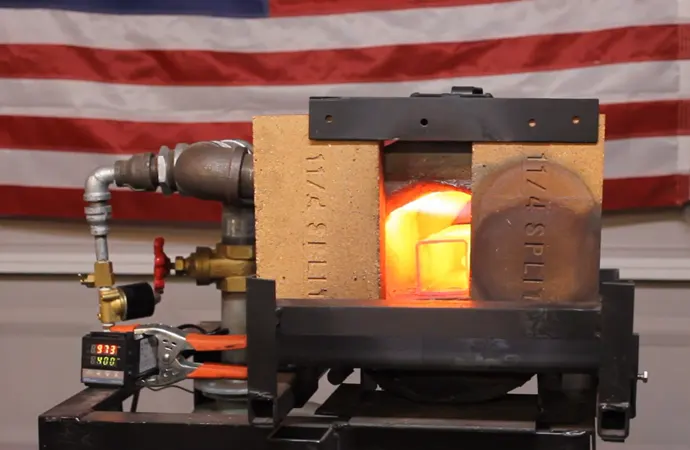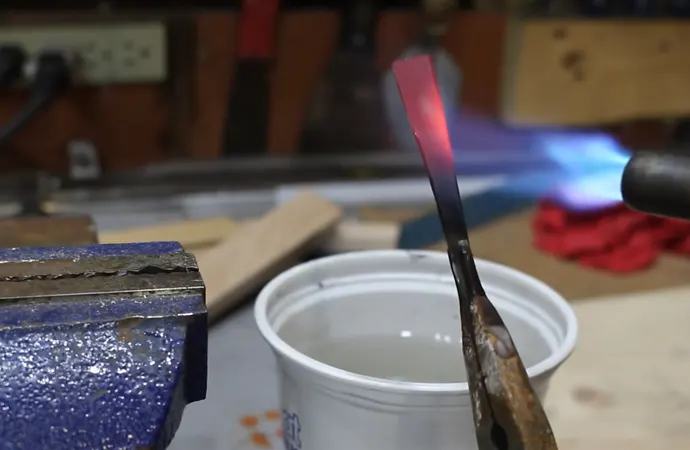How Hot Is A Forge? Temperatures, Colors, And Happy Range
When I hear the word ‘Forge,’ it reminds me of something really hot and flaming. So how hot is a forge literally?
So, let’s talk about forging temperature and color. This is very important so what you don’t want to do is beat on metal that has become too cold.
You’re going to work against yourself. You’re going to put stress on the metal, stress on your anvil, and stress on your body, so your shoulders are going to give out sooner.
So you have to make sure that the metal is nice and hot.
Forging Temperatures and Colors
As you know propane forges and coal forges can get very high temperatures. The average forging temperature is between 350 -1500 degrees. The nice thing about gas is that it will maintain a nice high forging temperature for a good long time.
You don’t have to worry so much about those fluctuations. So, what do we look for in terms of color, and what does that mean in terms of temperature? We’re going to talk about mild Steel as our example.
Now, We Want a Nice Bright Yellow-Orange Color.
I’m talking about such a bright yellow-orange what that translates to is above 1500 degrees! And, that gives you more time outside the Forge to hammer on it. As it approaches cherry red is too cold and needs to go back into the Forge.
So nice and hot as you can get it without turning it into molten metal because I have metal that heats up and gets white-hot it will start to spark out, especially in cold forges.
You don’t want that. So, get it nice and hot, and a bright yellow-orange, and that’s going to give you the most time to work it. Stay hot for about 10 seconds. So get a 3/8 inch thick piece of Steel and tease it up to bright yellow-orange to stay hot for about 10 seconds.
So I do my work my heat in 10 seconds, and that seems very short, but you always got to remember you got another heat coming after that.
So not 10 seconds per heat, maybe 15, put it back in and get more heat on it. And always remember that this is more of a marathon activity than it is a sprint.
You must have the patience to do this.
Red-orange or Cherry red Color?
If you were to work that same piece more like red-orange or cherry red, dropping it down to eight hundred to a thousand degrees somewhere in there. You’re going to have just a few seconds to do not much of anything because that metal is just not pliable enough, not Wiggly enough of you will not enough like taffy to really do much damage.
So get it nice and hot. You have to get those burners going if you’re using a coal Forge; get that blower going up through it but monitor it.
So you know how hot you’re going. You don’t need to go too high, okay!
What is Your Happy Range?
So your happy range is bright yellow-orange. Back in the old days, every town across the world (we should be very common) relies on that color and temperature. Because I didn’t have fancy heat gauges and things like that to rely on.
So they decide to test things up. As you’re doing this, if you want to test it out, you’re welcome to heat something up to cherry red (say, in a bonfire sometime). And, get up to cherry red and then beat on it and see what that feels like.
Then get it up even hotter by applying some air to it. Now, get it up to that orange color. And, beat on that to get it up even harder than that.
After beating on that, you’ll be able to feel the differences between all of those different temperatures and how easy it is to work.
All right! So that’s a bit about forging temperature and color.
Carbon steel is the last thing
The last thing I’ll say about it is its carbon steel. Typically it needs to be worked much hotter than mild Steel because of the higher carbon content.
We recommend people come back in and make tomahawks or hand hatchets or things like that.
The type of Steel we use has so much carbon in it because we wanted it to be really tough. So we take that impact like chop and do so. We need to get that really hot even though you are even hotter than that bright yellow-orange. We’re talking yellow. Yellow gets to get that really hot just because of the carbon content in it.
Mild Steel is not as important. It’s still pretty pliable at lower temperatures so keep that in the back of your mind as you work in different steels.
Let’s Get Watch How Hot is a Forge
Final Words
No matter how hot can a forge gets, you can always reinforce its temperature. In a different article, I reviewed some great propane forges. And I found out ways how you can significantly increase your forge’s temperature.





